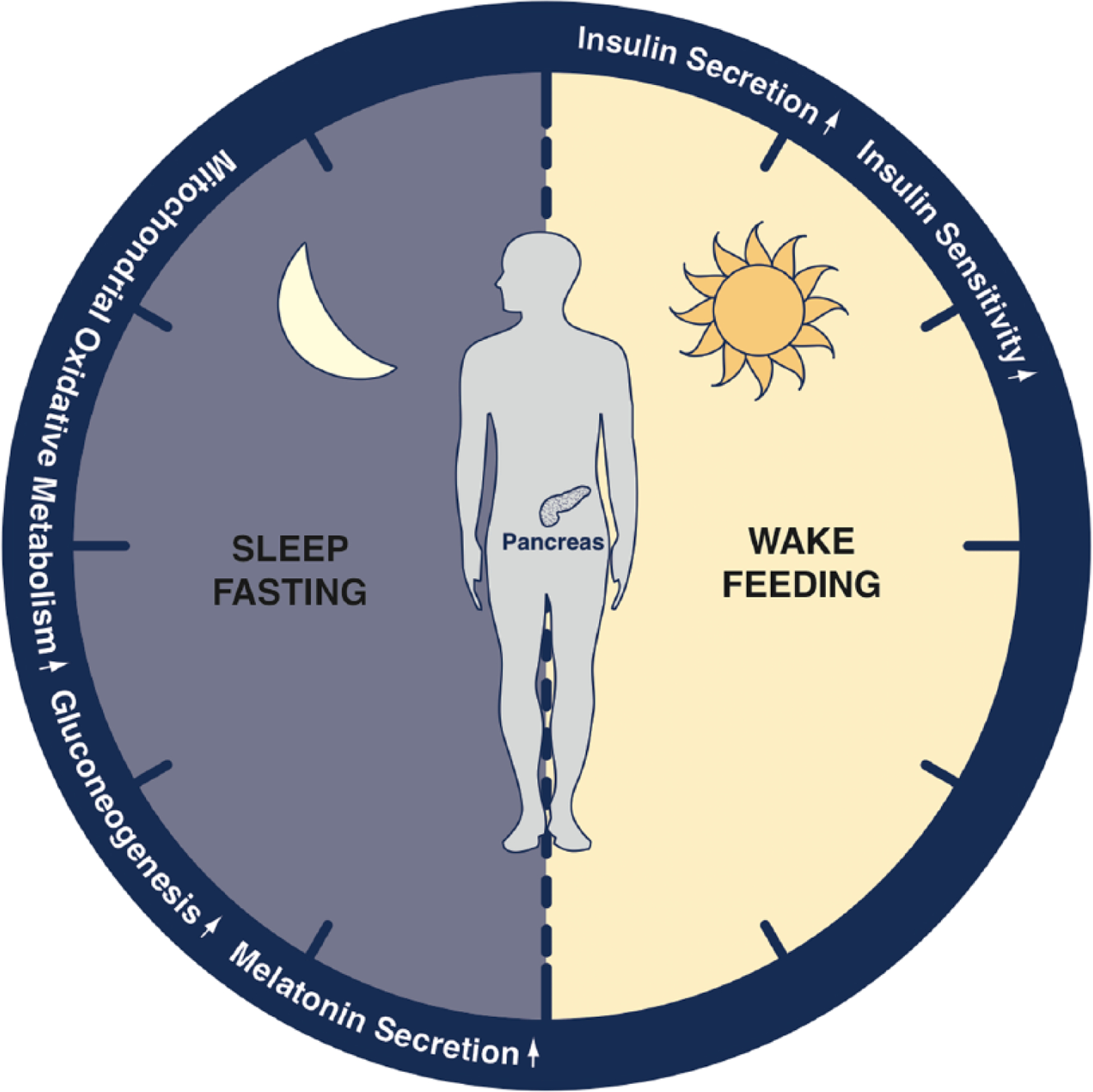Figure 1.

Regulation of glucose homeostasis by the circadian clock. Blood glucose levels are coordinately regulated across the 24-h light-dark cycle by molecular clocks expressed throughout the body. The cell-autonomous clock within insulin-producing pancreatic beta cells anticipates the start of the active or feeding period by increasing glucose-stimulated insulin secretion, which in turn stimulates the clearance of glucose from the blood. Both insulin secretion and peripheral insulin action decline as the day progresses, while the liver clock increases glucose synthesis to sustain blood glucose levels in anticipation of sleep. Brain-derived melatonin increases in the evening in humans and may sensitize beta cells to secrete insulin in response to glucose in the morning. Molecular clocks distributed within beta cells, brain, and peripheral insulin sensitive tissues coordinate blood glucose levels across the day-night cycle.
